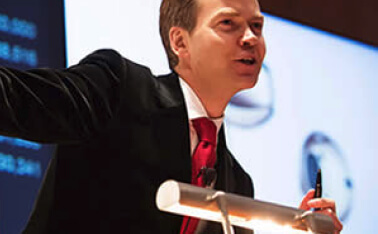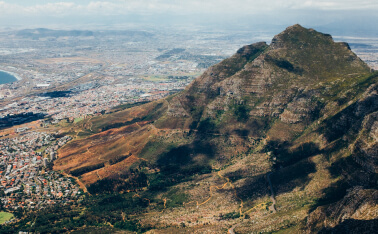Real estate buyers becoming environmentally aware
Category Property News
More people are installing green features in their homes to avoid the threats of load-shedding and Day Zero
Environmental decline is a growing concern for many South Africans, but it is the constant threats of drought and load-shedding - plus the increasing costs of water and electricity - that are pushing them to live greener lifestyles.
They usually begin with their homes. Driven by the drought, Capetonians in particular are using indigenous shrubbery in gardens or even artificial grass, says Grahame Cruickshanks, managing executive of market engagement at the Green Building Council of South Africa. Energy-efficient lighting and lowflow water adaptions to taps and shower fittings are seen in many homes; energy-efficient white goods are more in demand.
Nowhere is this trend towards homes with alternative, more efficient sources of energy and water more evident than in the Western Cape, where the recent prolonged drought has made water conservation an imperative now and into the future, agrees Anthony Stroebel, a Green Building Council board member and head of strategy for the Pam Golding Property group. Many consumers are doing their utmost to go entirely, or at least partially, off the grid.
"Almost overnight it has become relatively commonplace in Cape Town to see lawns replaced with indigenous shrubbery and succulent gardens, as well as artificial grass, not to mention a proliferation of water storage tanks and rooftop solar panels," he says. Boreholes and well points are the biggest focus of Cape Town home owners since the drought, says Knight Frank chief executive Richard Hardie. Solar power is "catching on" slowly.
"Many solar power units aren't that efficient. The newer units with the latest technology are better, particularly compared with what is on the market in Europe." Although boreholes are not always allowed on estates, says Chris Cilliers, chief executive and principal at Lew Geffen Sotheby's International Realty, they have become increasingly popular with freehold properties.
"In some cases, neighbours are sharing the costs of a borehole between several plots." Research conducted by the Green Building Council in preparation for the launch of its Smarthome awareness campaign indicates many homeowners identify with the link between reducing household utility costs and energy and water efficiency, but do not necessarily make the connection to reduced environmental impact.
Rather, they implement measures to reduce operating costs and improve energy and water security. "The focus of the cost-saving measures is often on water heating as this is frequently the largest energy consumer in a home. Homeowners replace electric geysers with alternatives such as solar water heaters, heat pumps and gas water heaters."
But only solar water heaters offer renewable energy as the other two options (electricity and gas) are linked to fossil fuels. The drought and Eskom energy crisis are big drivers of demand for green features, says Seeff Property Group chairman Samuel Seeff. "It is not just a Cape water crisis. We have seen this spread to other metros and smaller towns, all because of poor planning and lack of adequate infrastructure development.
"Aside from the risk of literally running out of water and electricity, the cost of these utilities has spiralled and likely to escalate further over the next few years."
Home buyers think boreholes provide more bang than solar panels
Water shortages and load-shedding are making energy and resource efficient homes increasingly attractive for buyers, says Anthony Stroebel, a Green Building Coucil SA board member and head of strategy for the Pam Golding Property group.
Properties listed as having "green" attributes, such as recycling and energy and water saving features, are receiving "considerable attention". "In a survey conducted by the property group among their agents, 70% of respondents estimated homes with green features such as solar, variable speed pool pumps, ceiling fans versus air-conditioning, grey water systems, rainwater collection tanks, boreholes and waterwise gardens, may command a price premium of about 5% to 10% over similar non-green homes," Stroebel says.
Home owners in Scarborough are generally "very enthusiastic" to adopt green features, says Elly Abels, Greeff area specialist there and in Misty Cliffs. These features are a huge selling point for many buyers.
Green features are also considered value adds for buyers in Bishopscourt, Kenilworth, Claremont Upper and Trovato, says Greeff agent Debbie Woods.
These features make for a better offering and may swing a buyer in the direction of the house that is more green, says Chris Cilliers of Lew Geffen Sotheby's International Realty.
"People also see it as a cost-saving, although they do not always appreciate the cost of installing the green features and often sellers want to be compensated for features they installed." Compensation does occur, but not usually at a profit, says Steven Neufeld, manager principal of Lew Geffen Sotheby's in Plettenberg Bay "Given two homes that are essentially the same, the one with green features will generally be selected."
Does this mean buyers are willing to pay more for such properties? Greeff's Noordhoek area specialist, Dale Gremels, says this depends on how important green features are to them. However home owners who have invested in such measures with "definitely make back the money when selling". Seeff agents, however, report that green features do not add greatly in terms of capital value of the price buyers will pay for a property.
Furthermore, sellers would, at best, only recover costs spent on these features if they are in mint condition. Seeff agents Doris Ricketts and Michele Apperley say green features do make a property more attractive, but buyers will not overpay for them. The value still needs to be there in the actual property and location.
While solar power has a part to play in the future, buyers are not necessarily seeking homes with it, says Knight Frank's Richard Hardie. Boreholes are more popular after the drought and will assist homeowners with water use and rates, and allow them to have and maintain a bigger garden and pool. "Owners want to rely on the borehole to fill the pool and keep the garden green."
More residential developers are building for the eco-friendly
Residenttial developers are also focusing on the promotion of energy and water efficiency initiatives in homes as a green value-add, with some choosing to certify projects to the EDGE green building standard, says the Green Building Council SA's Grahame Cruickshanks.
Changes to building regulations and the inclusion of the SANS 10400 XA regulation for energy efficiency have also driven the adoption of energy efficiency measures by builders. "These measures include water-heating systems, energy-efficient lighting and better insulation.
Going beyond the compliance standards is currently the exception, but the motivation to go beyond is growing as home buyers become more heavily impacted by rising utility costs."
Developments are becoming increasingly green through the use of local building materials and design features for heat reduction or conservation, the construction of apartments in green precincts and apartments and freehold properties in eco-estates, says Pam Golding Property Group's Anthony Stroebel.
In the Winelands, municipal building regulations have already been adapted to include an environmental impact report, says Chris Cilliers, chief executive and principal at Lew Geffen Sotheby's International Realty. Developers are generally moving towards solar and other renewable energy sources as well as water-storage facilities and grey water usage for gardens, she says.
"Property insulation is regulated and many estates also encourage owners to include at least one large tree in their landscaping when a new home is built."
Steve Neufield of Lew Geffen Sotheby's International Realty says Plettenberg Bay authorities are forcing some issues, such as rainwater tanks, but developers sometimes will specifically choose to go green, as with the Duin en See development on Robberg Beach.
Developers, however, still have "a long way to go" with many not particularly focused on green building, says Knight Frank's Richard Hardie.
Construction: Pro-climate builds
Edge is a certification system for new residential buildings administered in South Africa by the Green Building Council in partnership with the International Finance Corporation, says the council's Grahame Cruickshanks.
"Balwin, South Africa's largest turnkey sectional-title developer, has recently committed to having 10 developments, with a total of 10 896 built-to-sell apartments and 4 688 rental apartments, receiving an EDGE certification."
Steve Brookes, founder and chief executive of Balwin, says: "With EDGE's complementary software we now have a cost-effective planning tool that helps us to build greenly based on occupant behaviour, building type and the local climate. The certification provides our environmentally conscious buyers and tenants with assurance they are minimising their own environmental footprint."
Earth-friendly a good investment
An academic study which examines the cost of green buildings in their construction and operation and compares them to similar buildings, found that in 2016, building green cost an extra 1.1% to 5%.
However, this cost continues to decrease, says Grahame Cruickshanks of the Green Building Council SA, which was involved in the publication of the study.
In fact, a 2018 article published by the council states: "Green buildings outperform non-green buildings in every area of benefit and match them on cost. "MSCI and the council's joint green index proves green buildings deliver a better return on investment than non-green buildings, almost double, based on financial data from actual property.
"The evidence that the number of global green buildings continues to double every three years proves the advantages are too valuable to ignore. "In South Africa the cost premium of building green averages 5% and is decreasing rapidly
Money matters a pricey enterprise
The advantage of going green are seen in the increase in the number of people adapting their homes to suit this lifestyle and cut costs. Many, however, are put off by additional expenses, especially during an economic downturn, says the Greeb building Council SA's Grahame Cruickshanks.
There are also difficulties associated with making an informed choice about the best green interventions and the cost. Some buyers are not willing to pay more for such homes, says Richard Hardie from Knight Frank.
"It will stand out, but not make a greater return of investment at this stage." Seeff says greening a home can be "very costly" when adding a borehole or solar heating, and can range from R100 000 to R600 000."
Author: Lew Geffen Sotheby's International Realty

 Featured
Featured
 On Show
On Show








